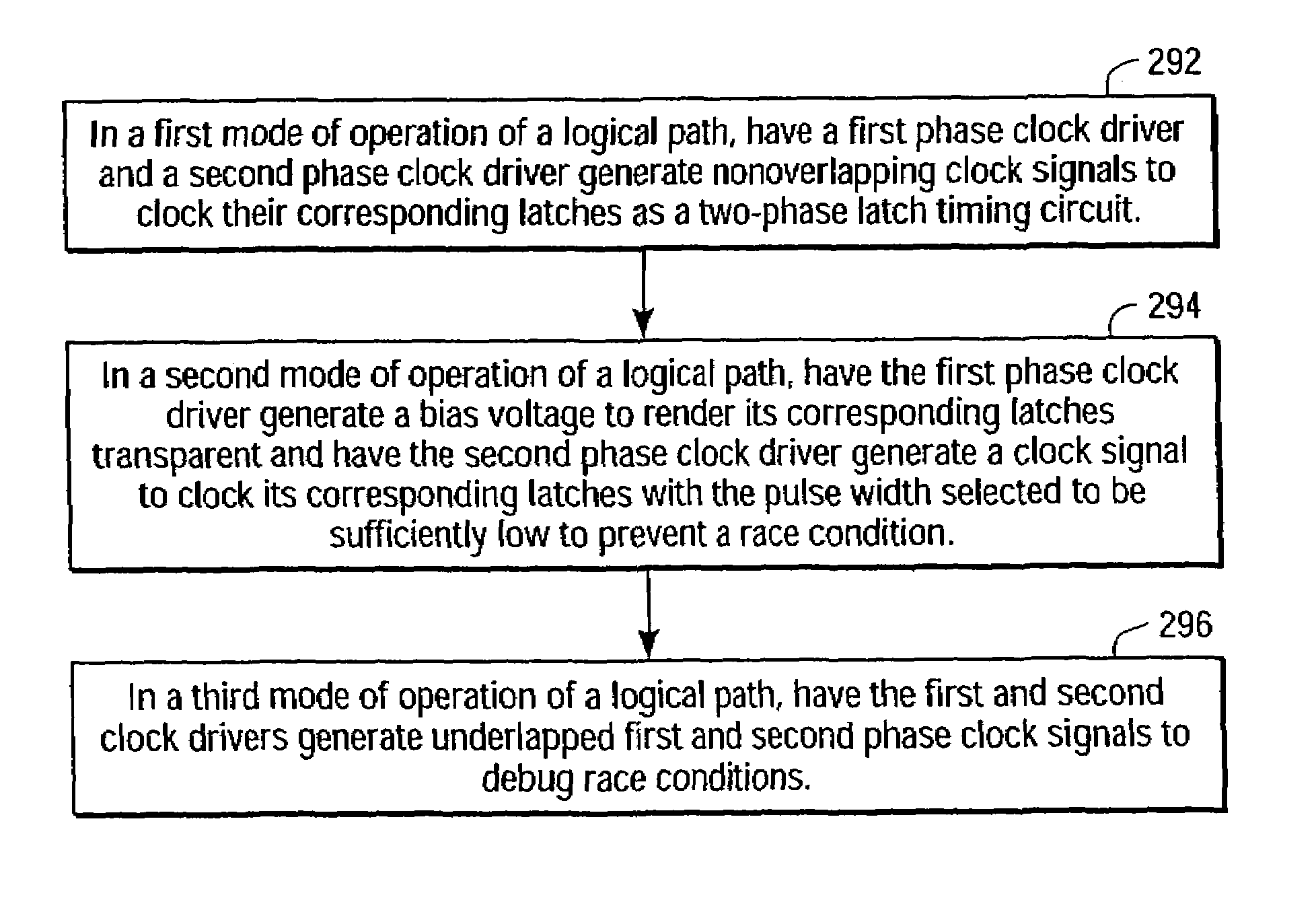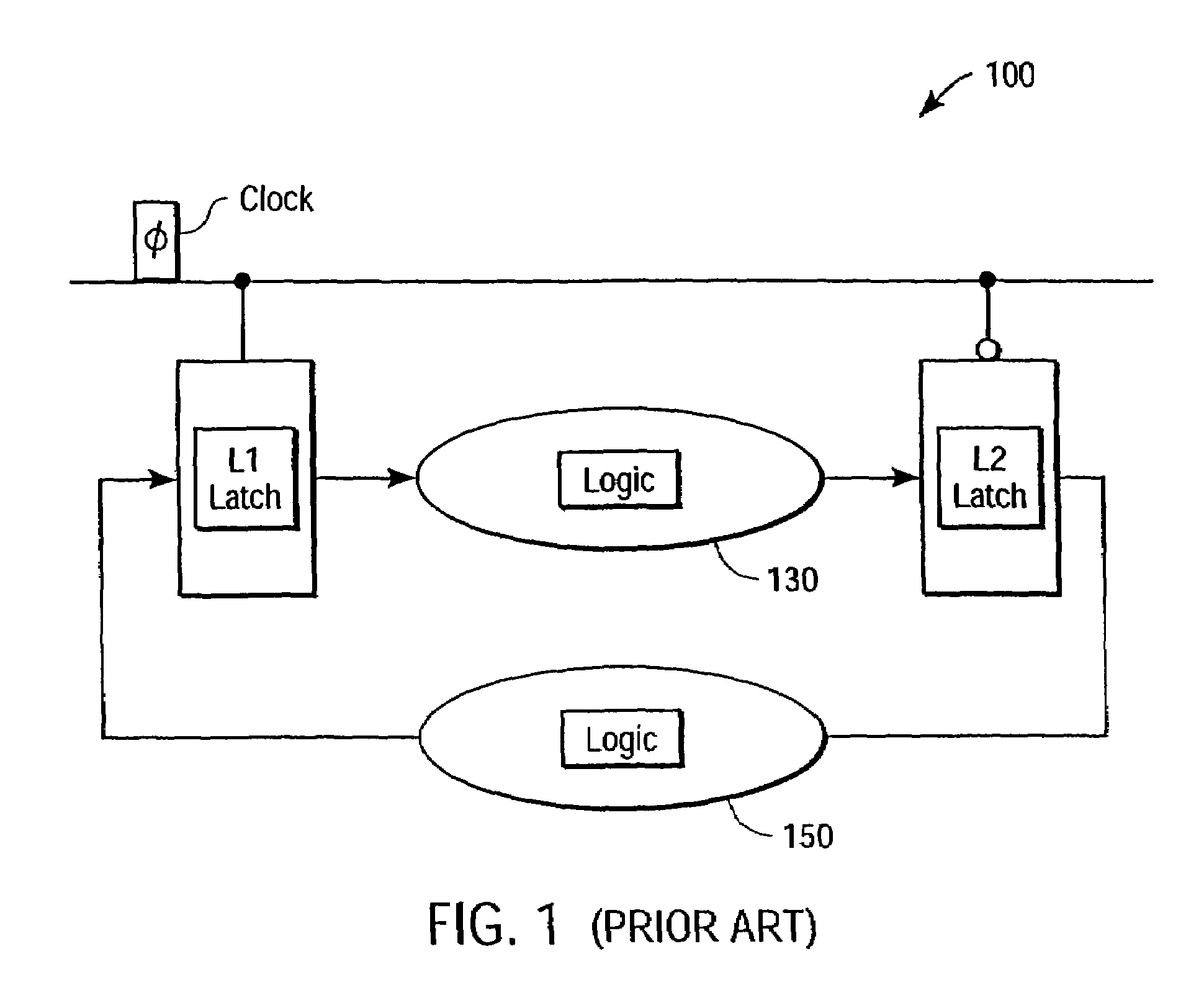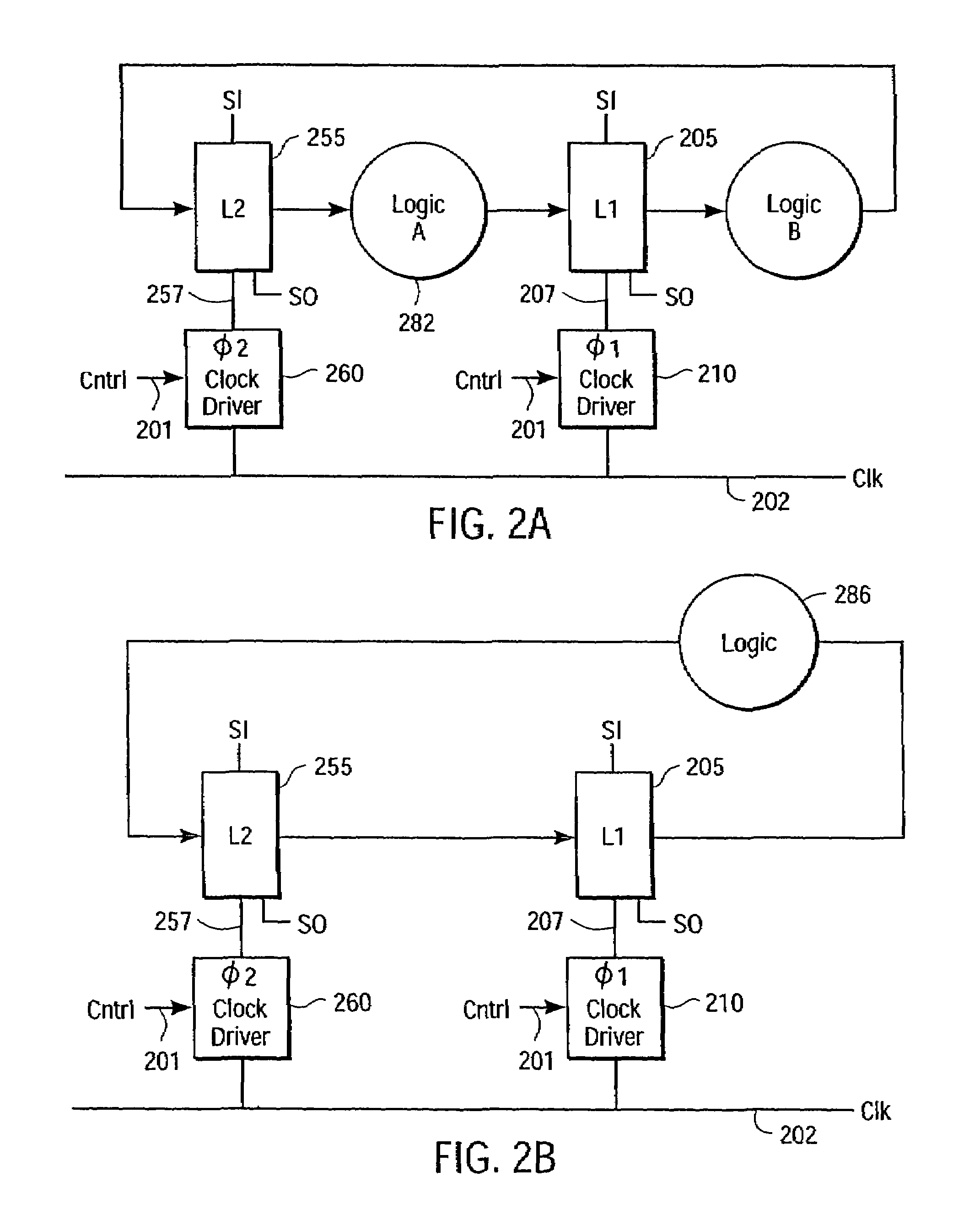Cold clock power reduction
a clock power and cold technology, applied in the field of latch timing circuits, can solve the problem of more clock power than desired, and achieve the effect of reducing clock power and clock power consumption
- Summary
- Abstract
- Description
- Claims
- Application Information
AI Technical Summary
Benefits of technology
Problems solved by technology
Method used
Image
Examples
Embodiment Construction
[0026]The present invention generally comprises a multi-mode latch timing circuit and method that permits a single latch timing circuit to be used in an least two different modes of operation. FIGS. 2A–2C are block diagrams showing latch timing circuits in accord with one embodiment of the present invention. FIG. 2D is a flow chart showing illustrative modes of operation. One mode of operation 292 is as a conventional two-phase latch timing circuit having two non-overlapping latch states of a first and a second set of latches. Another mode of operation 294 holds the first set of latches in a transparent state to reduce clock power consumption. Additionally, in one embodiment, in a third mode of operation 296 the two phase clocking signals may be altered from a conventional overlap mode to an underlap mode, which is beneficial to debug race conditions.
[0027]Referring to FIG. 2A, a first set of latches 205 (e.g., at least one “L1” latch”) is part of a data path with a second set of la...
PUM
 Login to View More
Login to View More Abstract
Description
Claims
Application Information
 Login to View More
Login to View More - R&D
- Intellectual Property
- Life Sciences
- Materials
- Tech Scout
- Unparalleled Data Quality
- Higher Quality Content
- 60% Fewer Hallucinations
Browse by: Latest US Patents, China's latest patents, Technical Efficacy Thesaurus, Application Domain, Technology Topic, Popular Technical Reports.
© 2025 PatSnap. All rights reserved.Legal|Privacy policy|Modern Slavery Act Transparency Statement|Sitemap|About US| Contact US: help@patsnap.com



